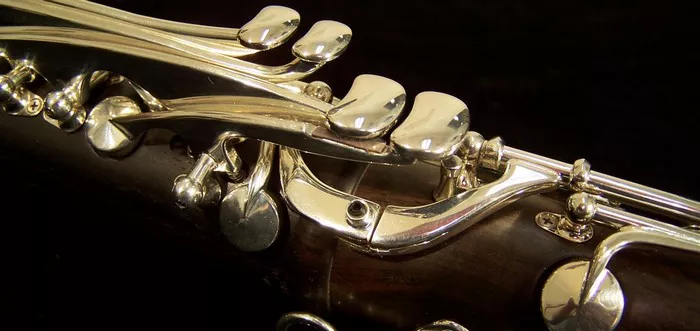In the vast world of musical instruments, few are as captivating and versatile as the clarinet and saxophone. Both members of the woodwind family, these instruments boast rich histories and distinctive sounds that have enchanted audiences for centuries. Utilizing reeds to produce their characteristic tones, the clarinet and saxophone offer musicians a unique avenue for self-expression and creativity.
Introduction to Clarinet and Saxophone
The clarinet, with its sleek design and mellow timbre, has been a staple in classical, jazz, and contemporary music alike. Originating in the early 18th century, the clarinet has evolved into various forms, including the popular B♭ clarinet, bass clarinet, A clarinet, and Eb clarinet. Typically constructed from wood or durable plastic, the clarinet’s 17 keys allow for precise control over pitch and tone, making it a favorite among soloists and ensemble players alike.
Contrastingly, the saxophone boasts a brassy brilliance and robust resonance that commands attention in any musical setting. Invented by Adolphe Sax in the 1840s, the saxophone has since become synonymous with jazz, though its versatility extends to classical, pop, and rock genres as well. Available in various sizes, including tenor, alto, soprano, and baritone, the saxophone’s approximately 20 keys provide ample opportunity for melodic exploration and expressive performance.
Differences Between Clarinet and Saxophone
1. Range
The range of a clarinet typically spans from D3 to B♭6, offering a narrower scope compared to the saxophone’s broader range of Db3 to Ab5.
2. Appearance
Clarinet: Often crafted from wood or plastic, the clarinet exudes elegance with its slender body and understated keywork.
Saxophone: Constructed from brass with a lacquer finish, the saxophone’s curved shape and shiny exterior make for a striking visual presence on stage.
3. Sound Description
Clarinet: Known for its rich, soothing tones and direct projection, the clarinet produces a warm and inviting sound that captivates listeners with its clarity and depth.
Saxophone: Characterized by its deep, round tones and powerful resonance, the saxophone commands attention with its bold and dynamic sound, capable of conveying a wide range of emotions and moods.
4. Number of Keys
Clarinets typically feature 17 keys, including various trill keys and alternate fingerings, while saxophones boast around 20 keys, offering additional flexibility and range for the performer.
5. Size
A clarinet measures approximately 26 inches (66 cm) in length, making it compact and easily portable for musicians of all ages. In contrast, a saxophone spans approximately 3.9 feet (1.2 m) in length, requiring a bit more space and handling due to its larger size.
6. Material
Clarinets are commonly made from wood or durable plastic, offering a choice between traditional warmth and modern durability. Saxophones, on the other hand, are primarily constructed from brass, providing a distinct metallic resonance and durability for long-term performance.
7. Invention Period
While clarinets trace their origins back to the early 18th century, saxophones are a more recent addition to the musical landscape, invented by Adolphe Sax in the 1840s.
8. Other Types
In addition to the standard B♭ clarinet, variations such as the bass clarinet, A clarinet, and Eb clarinet offer unique tonal characteristics and extended range options for performers. Similarly, saxophones come in various sizes, including tenor, soprano, and baritone, each with its own distinct sound and performance capabilities.
9. Price
For intermediate-level instruments, clarinets typically range around $2500, while saxophones tend to be priced higher, averaging around $4000 due to their intricate design and construction.
Usage and Context
1. Clarinet:
- Widely utilized in classical, jazz, and contemporary music genres.
- Often featured as a solo instrument or in ensemble settings, providing melodic embellishments and expressive flourishes.
- Commonly found in orchestras, wind ensembles, jazz bands, and chamber music groups.
2. Saxophone:
- Prominent in jazz, but also prevalent in bands, quartets, and popular music genres.
- Offers versatility for solo performances, ensemble playing, and improvisation, making it a favorite among jazz musicians and contemporary artists alike.
- Frequently heard in concert bands, marching bands, jazz combos, and pop/rock bands, adding depth and character to musical arrangements.
Conclusion
In the end, the choice between the clarinet and saxophone is a deeply personal one, guided by individual tastes, musical aspirations, and performance preferences. While each instrument offers its own unique charms and challenges, both the clarinet and saxophone hold a cherished place in the world of music, with dedicated enthusiasts and virtuosic performers alike. Whether you’re drawn to the clarinet’s lyrical melodies or the saxophone’s soulful solos, rest assured that both instruments offer boundless opportunities for artistic expression and musical fulfillment. Ultimately, the decision to choose clarinet or saxophone rests in the hands—and hearts—of aspiring musicians, who embark on a journey of discovery and creativity that knows no bounds.


